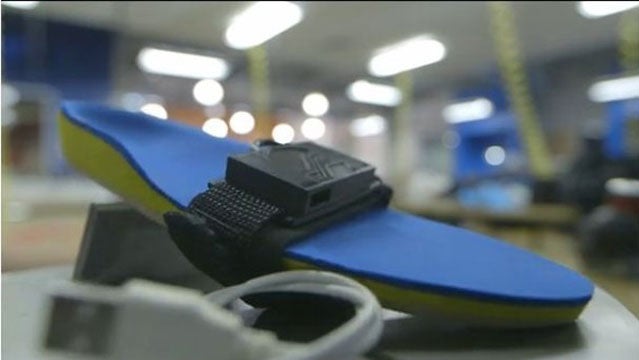The idea of special shoes that generate energy—recharge your GPS, camera, or cell phone simply by hiking—has been around for decades. Now, with mechanical engineering advances from a Pittsburgh startup called , the concept may have its best shot at hitting at a camping supply store near you.
A crew of young Carnegie Mellon grads and their investors announced Monday plans to sell an electricity-generating insole within the next 18 months that fits inside any hiking boot or sneaker. Their current prototype is close to charging an iPhone with the energy produced by your body during a 2.5-mile hike.
The basic idea is simple: in normal circumstances, every time you step down, your shoe dissipates kinetic energy into the dirt. What if you could use that energy to generate off-the-grid power? No need to haul bulky solar panels, power bricks, or hand-crank generators in your pack.
But researchers in the past have struggled with the details. “Putting an energy harvesting mechanism in a shoe isn’t new,” says Hahna Alexander, the CTO and founder of SolePower. “The real difference between us and them is that no one’s really tried to put it in an insole.” Alexander, a recent mechanical engineering grad who grew up in upper state New York, realized that a replaceable insole freed the team from building the whole shoe. “We’re engineers, not footwear designers.”
The insole weighs 10 ounces, plus the weight of the battery (the whole thing is worn on only one foot). A little electromagnetic coil inside makes electricity during both the contact and swing phase of your gait, charging up the battery, which then connects to any device you choose. “The key was getting it small enough, and with enough kick to power a battery,” says Alexander. Users wear the current version of the battery pack on the ankle, but observers said it looked like a “house arrest bracelet,” so the team has been working on an alternative battery placement on top of the laces.
Meanwhile, company CEO Matt Stanton has been comfort-testing prototypes during weekend camp-outs, including a 17-mile hike through Pennsylvania’s Black Forest Trail and a 25 miler through state park trails. “It’s not noticeable when you step down because the generator only needs a small amount of deflection,” says Stanton. “It cushions your step similar to how your foam insole does normally.” Over the next few months, the team plans to upgrade the electronics, “some of which are honestly a little hacked together,” says Stanton, and to try out beta units with public testers.
In talking to these young engineers, we felt a little nervous for them, especially after hearing that they declined jobs in bigger companies to spend at least the next two years in startup mode. Alexander for example, has already worked for three NASA divisions and had a job at SpaceX, the private space transport company funded by Elon Musk. SolePower began as a senior project that she, Stanton, and others built at school. The device impressed observers so much that AlphaLab, an advisory and investment wing of a venture capital firm, took them on. They decided to make it into a commercial venture. “It was a big boost for our company when Hahna decided to stay, because she was turning down offers left and right,” recalls Stanton.
The challenges may not exactly come from competitors, which are scant. plans to employ a more exotic technology called microfluidics, but has a more long-term commercial plan. There is also an working on a shoe using another technical approach. The real challenges may lie in the inherent risks of bringing out any radically new consumer gadget.
They do have boosters. “This team has shown that they can do this at the right price to meet the outdoor enthusiast market,” says Ilana Diamond, a former electronics company CEO who advises the company for AlphaLab. “They have a simple, inexpensive, mass-produceable solution. Our next big job is getting it into mass production.”
SolePower began a campaign this week


